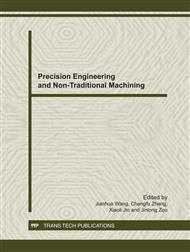p.548
p.552
p.559
p.563
p.567
p.572
p.576
p.580
p.584
Fault Diagnosis for Speed-Up and Speed-Down Process of Rotor-Bearing System Based on Volterra Series Model and Neighborhood Rough Sets
Abstract:
For the purpose of addressing non-stationary, poor repeatability, abundant information in the speed-up and speed-down process of a rotor-bearing system, combining with volterra series (VS) and neighborhood rough sets (NRS), a new hybrid intelligent diagnosis method is proposed. The VS is a type of nonparametric model of a nonlinear system, it can model a wide range of nonlinear systems, and can get the volterra kernel that includes the related characteristics of the system through identification. The NRS extracts useful information based only on the data itself, and is used for redundant attributes reduction to make the selected features more objective. In this paper, speed signal and vibration peak-peak value were selected as input and output signals, identified volterra kernels were applied as fault features first, then the NRS was applied for feature selection, and finally support vector machine(SVM) was used as a classifier to recognize faults of the speed-up and speed-down process. The experiment results demonstrate the proposed model not only identifies the fault type, but also identifies the fault severity.
Info:
Periodical:
Pages:
567-571
Citation:
Online since:
November 2011
Authors:
Price:
Сopyright:
© 2012 Trans Tech Publications Ltd. All Rights Reserved
Share:
Citation:


